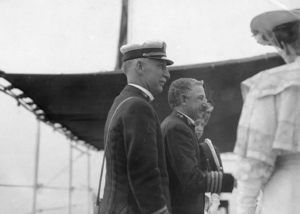 The history of the Jews in Guam, a territory of the United States in the western Pacific Ocean, dates back to at least 1899. A high point in Jewish activity in Guam
The history of the Jews in Guam, a territory of the United States in the western Pacific Ocean, dates back to at least 1899. A high point in Jewish activity in Guam
was during the time of World War II. Jews have continued to live there since, although as a small presence.
The man who accepted Guam and kick-started its unique relationship with the US was Jewish-American US Navy commander Edward Taussig. Born in St. Louis Missouri in 1847, Taussig chose a career in the US Navy and inspired his children to do the same, leading the next three generations of the Taussigs to enlist in the navy. Guam was conquered by the Japanese in World War II, and was retaken by the US in the battle of Guam in 1944. During a festive Jewish Rosh Hashanah – New Year meal held in 1945, some of the 1,500 Jewish American soldiers who dipped the traditional apple in honey for a sweet new year remembered the bitterness and cruelty of that battle.
A Boeing B-29 Superfortress hangar converted to the purpose by non-Jewish personnel of the Twentieth Air Force. The hangar was equipped with seats, a pulpit, a Torah ark to hold sacred scrolls, special lighting, and public address systems. A souvenir prayer book was printed as well. Chaplain David I. Cedarbaum officiated the ceremony, while others led the attending choir and blew the shofar.
 A single Jewish synagogue once existed on Guam. It was however destroyed in 1962, during an exceptionally strong typhoon. Despite this, members of the congregation continued to assemble. In 1976, a military chapel was dedicated for use by practitioners of Judaism by the US Navy and Air Force. From 1976 onward, a military chapel-turned-synagogue hosted the once-large number of Jewish personnel in the U.S. Navy and U.S. Air Force.
A single Jewish synagogue once existed on Guam. It was however destroyed in 1962, during an exceptionally strong typhoon. Despite this, members of the congregation continued to assemble. In 1976, a military chapel was dedicated for use by practitioners of Judaism by the US Navy and Air Force. From 1976 onward, a military chapel-turned-synagogue hosted the once-large number of Jewish personnel in the U.S. Navy and U.S. Air Force.
As of 2009, there are approximately 150 Jews in Guam, of which about a third are religiously active.